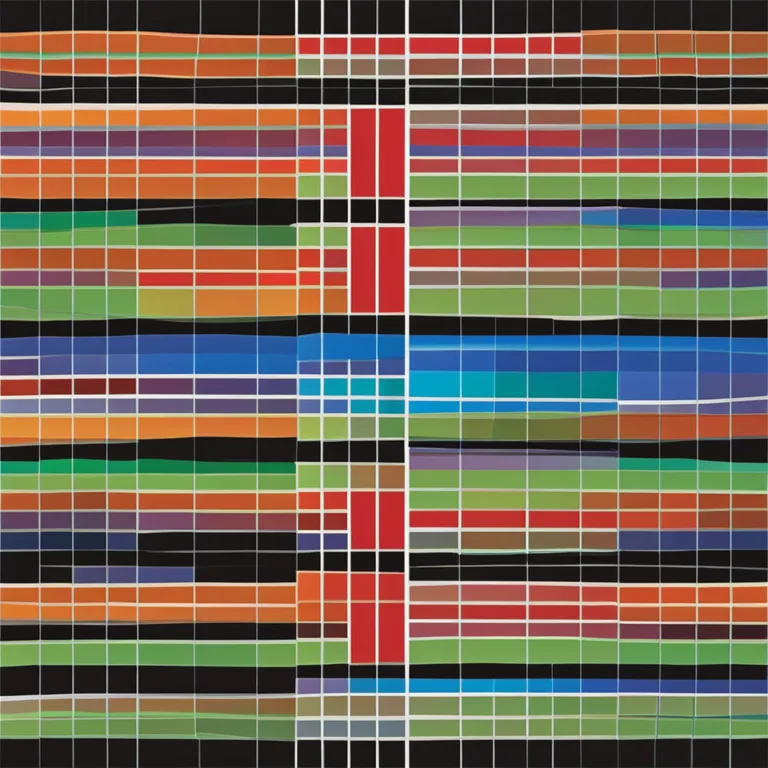
The Basics of a Biorhythm Chart
Learn the basics of a biorhythm chart and how it's said to predict various aspects of your personal well-being.
article by Adrian Wallace
Introduction to Biorhythm Theory
Biorhythms are theoretical cycles that allegedly influence various aspects of individuals' day-to-day performances and states of being. The concept, which has roots dating back to the 19th century, postulates that from the moment of one's birth, three core cycles—physical, emotional, and intellectual—affect one's life in predictable patterns. A biorhythm chart visualizes these cycles and is often consulted to assess high and low points in one's life areas. Although not scientifically proven, enthusiasts use biorhythm charts to make decisions or anticipate challenges.

Physical Cycle Insights
The physical cycle lasts 23 days and deals with one's stamina, strength, and overall physical condition. According to the biorhythm theory, when the cycle is in its positive phase, you might experience heightened endurance and vitality. Conversely, during the negative phase of this cycle, your physical resilience might be lower, and you may feel more tired or sluggish. The intersection point, where the cycle crosses the baseline, is considered a critical transition phase where one should be cautious about physical activities.

Emotional Cycle Dynamics
Your emotional cycle, spanning 28 days, reflects your mood swings, sentimentality, and mental well-being. Proponents of biorhythms believe that an upward trend in this cycle correlates with positive emotional states—optimism and high spirits. In contrast, a downward trend might signify moodiness or emotional stress. The times when this emotional wave crosses the zero line are seen as unstable – periods of emotional adjustment or heightened sensitivity.

The Intellectual Cycle Explained
Every 33 days, your intellectual cycle is said to complete a full loop, influencing cognitive functions such as analytical thinking, memory, and alertness. When the intellectual wave is on the rise, learning new skills or making decisions might seem easier. On the descending side, mental acuity might wane, and decision-making could feel more challenging. Transition points may also herald times of intellectual recalibration, where clarity can be momentarily clouded.

Using Biorhythm Charts Responsibly
Despite its popularity in certain circles, mainstream science does not support the accuracy of biorhythm predictions. Thus, while some individuals find these charts helpful for personal introspection or entertainment, it is essential to use them with a dose of skepticism and not as a substitute for medical, psychological, or professional advice. As more data-driven and empirical methods advance in 2024 and beyond, biorhythms remain a piece of the personal well-being puzzle for those who choose to engage with them.
How to Create Your Biorhythm Chart
To generate a biorhythm chart, you only need your birth date as the starting point. Numerous online calculators and mobile applications exist to plot the cycles for you. They provide visual representations of the intersecting waves, making it easy to track your high, low, and critical days. Keep in mind that these tools are designed to be user-friendly and accessible, often offering additional insights like compatibility reports or combined cycle analyses.
Published: 12/28/2023
Modified: 12/28/2023
More predictions
Come back here soon to learn more about yourself and your future


The Reality Of Biorhythm Compatibility
Unravel the truth behind biorhythm compatibility and its role in personal relationships and daily life.


Unlocking Your Body's Natural Clock
Explore the intriguing world of biorhythms and discover how they influence your physical, emotional, and intellectual states.


Biorhythm Theory: Fact Or Fallacy?
Explore the fascinating concept of biorhythms to discern if there's any scientific accuracy behind this popular belief.